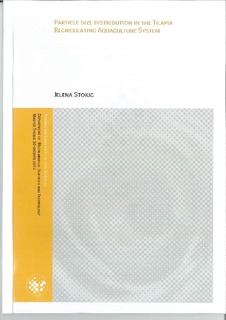| dc.description.abstract | This study was to evaluate methods for measuring and describing particle size distribution from three different spots in Tilapia recirculating system at University of Life Ccience in Ås, Norway. For this purpose serial filtration over different mesh size and parallel filtration over different mesh size methods were compared. Water samples were taken from before drum filter, after drum filter and after bio-filter (MBBR) and filtrated through eight different mesh size classes and calculated in mg suspended solids per liter (mgSS/l). Serial method is telling about suspended solids between two filter sizes, while parallel method tells about suspended solids bigger of a given filter size. Each filtering method was done three times in three different days. Results of serial filtration showed large difference in mgSS/l between days, especially between 0, 45 – 10 µm. Small particles (< 30 µm) are dominating in both methods. Water before drum filter contains a lot of large particles which are reduced after treatment in the drum filter. First and third days of serial filtration were more effective for the total suspended solids (TSS) after drum filter, unlike the second day which showed no decrease of TSS after drum filter: 9, 71 mgSS/l before drum filter, and 10 mgSS/l after drum filter. In the first day TSS before drum filter was 23, 58 mgSS/l and after drum filter it was reduced to 8, 8 mgSS/l. In the third day experiment showed 27, 73 mgSS/l before drum filter, and 14, 37 mgSS/l after drum filter. Water after Moving Bed Biofilm Reactor (MBBR) resulted in increase of TSS in the first two days, whilst the third day showed reduction of TSS value.
Parallel filtration method can be calculated as comparing samples, same as serial filtration method. This way of calculations of parallel filtration gave negative values for some of the particle size groups which bring into question the accuracy of the method. More further developing of methods are needed in order to get accurate results. | no_NO |
